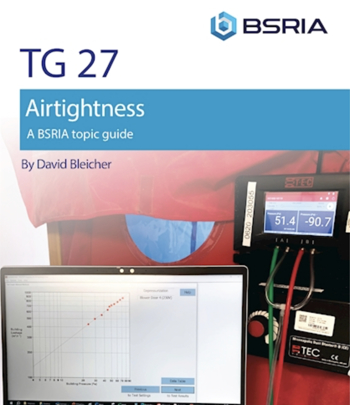Profit and loss account
Contents |
[edit] Introduction
Businesses will typically maintain a variety of financial statements to monitor performance over a set period. These include balance sheets, cash flow statements and profit and loss accounts. A profit and loss account will display the business’ income from sales, bank interest and any other income, goods to sell on to customers, or they may be more general administrative expense such as stationary. The expenses are subtracted from the sales to calculate how much profit (where income exceeds expenses) or loss (where expenses exceed income) a business is making.
A simple profit and loss account would display the income or turnover at the top with the expenses and costs beneath. The costs would usually be arranged into groups, rather than listed individually for ease. For example, rather than listing stamps, paper, pens, pencils, envelopes etc, it is appropriate to group them all under the title of stationary.
[edit] Legal requirement
By law, if a company is a limited company or a partnership whose members are limited companies, a profit and loss account must be submitted annually as part of the financial statement to Companies House.
Self-employed sole traders and most partnerships do not require a formal profit and loss account but accurate records are required in order to complete a self-assessment tax return.
[edit] Basic records
The exact profit and loss reporting requirements vary, but whatever business type, accurate records are required of income and expenditure. The basic records that should be kept include:
- Records of all sales and takings.
- Records of all purchases and expenses.
- A list of petty cash expenditure (if relevant).
- A record of goods taken for personal use and any payments to the business for these.
- A record of any money taken out of the business for personal use or paid in from personal funds.
- Back-up documents of all the above.
[edit] Information to be displayed
[edit] Business income
The income into a business comes under two main categories for profit and loss reporting:
- Sales or turnover – the total sales of products and/or services.
- Other income which includes interest on any business bank accounts, sale of equipment no longer required, rental income in to the business, money put into a limited company from personal funds and so on.
[edit] Business expenditure
The three main categories for business expenditure are:
- Cost of sales – the base cost of creating the product. This includes the cost of stock for resale, components/raw materials, labour to produce the product, small tools and any other production costs.
- Business expenses – the ongoing expenses associated with running a business which can include; employee costs, premises costs, repairs, general administration, motor expenses, travel/subsistence, advertising, interest, legal/professional costs, bad debts, depreciation, any other expenses.
- Cost of equipment purchased or leased for long-term use – known as ‘capital items’ or ‘fixed assets’ which can include: furniture, computer equipment, vehicles, machinery, premises and so on.
The cost of fixed assets is charged for as depreciation each year which reflects the fall in the value of the asset over time which spreads the cost of the asset over several years.
[edit] Example Profit and Loss Account
There are varying levels of complexity of profit and loss accounts depending on the size and type of business. A very simple example is displayed below.
| £000s | £000s | |
| Turnover (or Revenue) | Xxx | |
| Cost of sales | Xxx | |
| Gross Profit | xxx | |
| Expenses | Xxx | |
| Operating profit | Xxx | |
| Depreciation | Xxx | |
| Interest | Xxx | |
| Profit before tax | Xxx | |
| Tax | Xxx | |
| Net Profit | Xxx | |
| Dividends | Xxx | |
| Retained Profit | Xxx |
[edit] Related articles on Designing Buildings Wiki
Featured articles and news
A change to adoptive architecture
Effects of global weather warming on architectural detailing, material choice and human interaction.
How big is the problem and what can we do to mitigate the effects?
Overheating guidance and tools for building designers
A number of cool guides to help with the heat.
The UK's Modern Industrial Strategy: A 10 year plan
Previous consultation criticism, current key elements and general support with some persisting reservations.
Building Safety Regulator reforms
New roles, new staff and a new fast track service pave the way for a single construction regulator.
Architectural Technologist CPDs and Communications
CIAT CPD… and how you can do it!
Cooling centres and cool spaces
Managing extreme heat in cities by directing the public to places for heat stress relief and water sources.
Winter gardens: A brief history and warm variations
Extending the season with glass in different forms and terms.
Restoring Great Yarmouth's Winter Gardens
Transforming one of the least sustainable constructions imaginable.
Construction Skills Mission Board launch sector drive
Newly formed government and industry collaboration set strategy for recruiting an additional 100,000 construction workers a year.
New Architects Code comes into effect in September 2025
ARB Architects Code of Conduct and Practice available with ongoing consultation regarding guidance.
Welsh Skills Body (Medr) launches ambitious plan
The new skills body brings together funding and regulation of tertiary education and research for the devolved nation.
Paul Gandy FCIOB announced as next CIOB President
Former Tilbury Douglas CEO takes helm.
UK Infrastructure: A 10 Year Strategy. In brief with reactions
With the National Infrastructure and Service Transformation Authority (NISTA).
Ebenezer Howard: inventor of the garden city. Book review.
Airtightness Topic Guide BSRIA TG 27/2025
Explaining the basics of airtightness, what it is, why it's important, when it's required and how it's carried out.





















